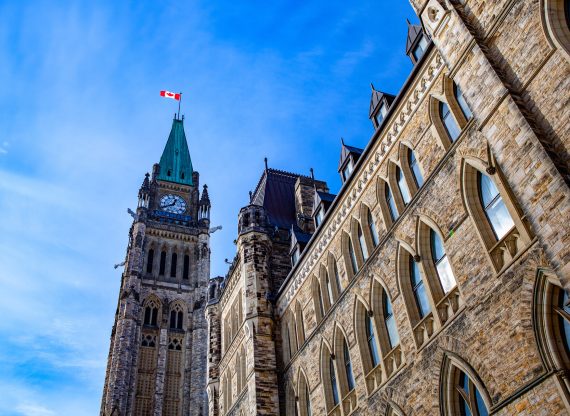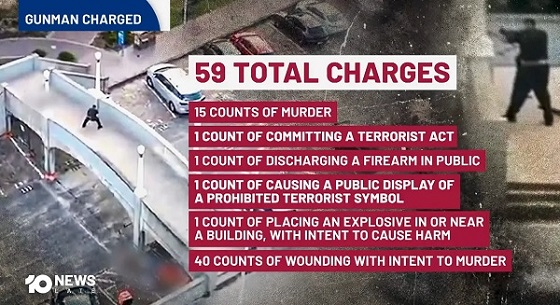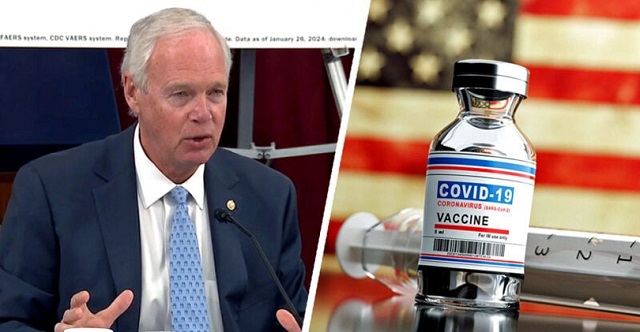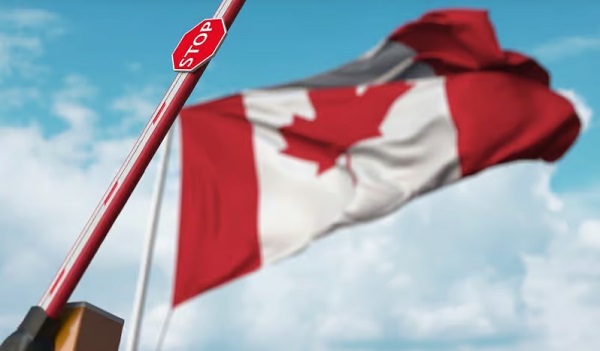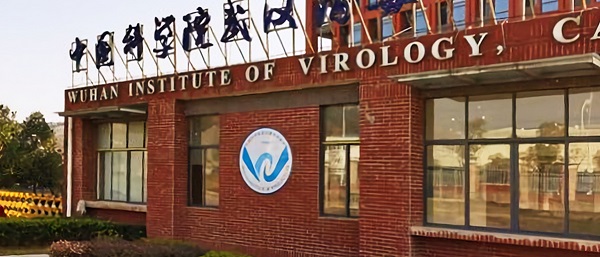We made a mistake.
Kings once ruled England with absolute power. Their word was the law. Centuries of struggle and reform gradually overcame their tyranny. We adopted this idea called the rule of law. We established checks, balances, limits, restraints and individual rights. For a while it worked. The law in Canada, as in other countries that inherited British common law, provided a system of justice as good as anything that civilization had ever produced.
But now the rule of law is fading. When it suits them, our institutions set aside their restraints. Using an idea to hold the powerful in check works only for as long as the powerful believe in the idea. And increasingly in the Canada of today, they do not.
Our mistake, over these centuries of reform, was that we did not go far enough. We did not take power away from institutions to rule over us. Instead, we just moved the powers around. Today, as in the days of kings, the law is based upon the authority of those who govern, not upon the consent of the governed.
The Law is not what it Pretends to Be
Law students come to law school to learn the law, which many of them think is a bunch of rules. Learn the rules, and you’re a lawyer. But that is not what the law is or how it works.
On their first day of law school at the Canadian university where I teach, I read my students a poem. It’s a short verse by R.D. Laing, a Scottish psychiatrist and philosopher who died in 1989. Laing was writing about personal interactions and relationships, but he might as well have been writing about the law. The verse goes:
They are playing a game.
They are playing at not playing a game.
If I show them I see they are, I will break the rules, and they will punish me.
I must play their game, of not seeing I see the game.
The law is a game. It pretends to be something it is not.
The Law does not Rule – People in Institutions do
I could have picked any of a thousand illustrations, but this one is simple. And it is one you already know.
Our Constitution is the supreme law of Canada. It says so, right in the text. The Constitution includes the Canadian Charter of Rights and Freedoms. Section 2(b) of the Charter guarantees the right to free speech. It says: “2. Everyone has the following fundamental freedoms:…(b) freedom of…expression…”
What can we tell from these nine words? We instinctively understand, immediately, that they do not mean what they say. Because they can’t. The provision plainly states that we have a right to free speech, but in its sheer absoluteness it tells us that we do not, at least not one that we can count on. How do we know?
Our constitutional guarantee of free expression doesn’t mean what it appears to say. If the Charter was honest, it would read: ‘2. Everyone has the fundamental freedoms that courts decide, from time to time, that they should have.’
Imagine someone comes up to you on the sidewalk and says, “I have a knife in my pocket. Give me your wallet or I’ll stab you in the heart.” That’s an assault. Your assailant threatened you with imminent violence and, in so doing, committed a crime. And yet, all he did was speak. There has been no stabbing, yet. There has been no theft, yet. The guy might not even have a knife. He spoke words. And section 2(b) of the Charter guarantees free speech. How can it be an offence?
The answer, of course, is that section 2(b) does not mean that all speech is protected. You cannot threaten other people with violence. I don’t know anyone who would argue that section 2(b) does or that it should allow this. But section 2(b) includes no limits. Its words don’t say where the line is. The provision doesn’t tell us what “freedom of expression” means.
 Rights are not absolute: Despite Canada’s Charter of Rights and Freedoms, the courts have pronounced on everything from what jokes comedians can tell to what pronouns can be used in court; regulators will determine what online content you may see and what medical opinions doctors may express. (Source of top right and bottom photos: Unsplash)
Rights are not absolute: Despite Canada’s Charter of Rights and Freedoms, the courts have pronounced on everything from what jokes comedians can tell to what pronouns can be used in court; regulators will determine what online content you may see and what medical opinions doctors may express. (Source of top right and bottom photos: Unsplash)
Everyone knows that free speech is not absolute and that some speech is not protected. Courts draw that line. We pretend that they do so in a manner that is bound by precedent, logic and the principles of statutory interpretation. But those considerations don’t compel the answer. In fact, skilled jurists can basically come to any answer that they can conjure up and support with judicial rhetoric. Rationales shift. Rights can mean something a little different every time.
It’s easy to agree that people should not have the right to threaten violence. But that’s not where the line on free speech is now drawn in Canada. Instead, an array of restrictions on speech has been created. You may not discriminate in your public statements. Comedians may not tell jokes intended to offend someone’s dignity on a protected ground. In some courts you must speak the pronouns that others require. Regulators prevent doctors from expressing medical opinions at odds with government policies. The Canadian Radio-television and Telecommunications Commission has the power to curate online content. The federal government has promised to censor “misinformation” and “online harm”, which means speech that it doesn’t like.
As courts become increasingly sympathetic to legal concepts such as “collective good” and so-called “group” rights, free speech in Canada becomes less an individual right to say what you think and more a privilege to express ideas consistent with what is deemed the public interest. Our constitutional guarantee of free expression doesn’t mean what it appears to say. If the Charter was honest, it would read: “2. Everyone has the fundamental freedoms that courts decide, from time to time, that they should have.” Which is essentially what section 1 of the Charter, the clause stating there are “reasonable limits” to the rights in the document, has come to mean anyway.
 In England, the long and difficult process of transferring power from the king to legislatures was marked by the British Magna Carta of 1215 (shown at left) and continued through the Glorious Revolution of 1688, which gave Parliament legislative supremacy. Depicted at right, the Glorious Revolution’s Battle of the Boyne Between James II and William III, 1690, by Jan Van Huchtenberg.
In England, the long and difficult process of transferring power from the king to legislatures was marked by the British Magna Carta of 1215 (shown at left) and continued through the Glorious Revolution of 1688, which gave Parliament legislative supremacy. Depicted at right, the Glorious Revolution’s Battle of the Boyne Between James II and William III, 1690, by Jan Van Huchtenberg.
Every reasonably well-informed person knows this. And yet people still harbour the conviction that the Charter means something objective and solid. If I had a dollar for every person during Covid-19 who said, “But they can’t do that, it’s in the Charter!”, I would be a wealthy man. All the Charter does – ALL that it does – is shift the final call on certain questions from legislatures to courts. But I don’t want to leave you with the wrong impression. Our problem is not that power resides in the courts.
The original problem was the king. In a long and difficult process starting in England, perhaps, with the Magna Carta in 1215, we took power from the king and gave it to legislatures.

Centuries later following the Glorious Revolution, the English Civil Rights Act of 1688 provided, in the now-quirky spelling of that era: “…the pretended Power of Suspending of Laws or the Execution of Laws by Regall Authority without Consent of Parlyament is illegal.” Parliament was elected, by some of the people at least. Legislatures had democratic legitimacy. Legislative supremacy became the foundation of British constitutional democracy.
But legislatures can be tyrants too. Legislative supremacy means that legislatures can pass any laws they like. They could do – and sometimes did – similar sorts of bad things that kings could do. They could criminalize your private relationships. They could take your property. They could give police the power to invade your privacy without a warrant. They could censor your speech. They could eviscerate rights found in the common law.
The newly independent Americans offered a solution: they created a Bill of Rights (comprising the first ten amendments to the United States Constitution, ratified in 1791) that took power from legislatures and gave it to courts.

Two hundred years after the Bill of Rights, the Canadian Charter did the same: took power from legislatures and gave it to courts. And here we are. Except the story is not quite done. There is one more step to go.
The Rule of Law: Restrained Government
What was the idea of the rule of law supposed to be? Legal theorists through the ages – a short list of whom would include Aristotle, Montesquieu, A.V. Dicey, Lon Fuller, Ronald Dworkin, Joseph Raz – would say that the rule of law is complicated. But it need not be. To see it clearly, compare it to its opposite: the rule of individual persons. When King Henry VIII in 1536 ordered that his second wife, Anne Boleyn, should lose her head, that was the despotic rule of a person.
 The meaning of the rule of law is made clear by its opposite – rule by the individual; when King Henry VIII ordered the execution of his second wife Anne Boleyn in 1536, that was the despotic rule of a person. Depicted at left, Henry VIII’s first interview with Anne Boleyn by Daniel Maclise (painted in 1836); at right, Anne Boleyn’s Execution by Jan Luyken (painted in 1600s).
The meaning of the rule of law is made clear by its opposite – rule by the individual; when King Henry VIII ordered the execution of his second wife Anne Boleyn in 1536, that was the despotic rule of a person. Depicted at left, Henry VIII’s first interview with Anne Boleyn by Daniel Maclise (painted in 1836); at right, Anne Boleyn’s Execution by Jan Luyken (painted in 1600s).
But it is people who make laws. People enforce laws. People apply laws to cases. It can’t be any other way. How to have the rule of law without the rule of persons?
One way is to divide and separate their powers (and, to a manageable degree, to put them in competition or opposition to one another) so that no one alone can rule. The most practical way devised to accomplish this has been to divide the functions of a state into three branches: the legislative, the executive and the judicial.

Under the separation-of-powers approach, legislatures legislate. They pass laws without knowing the future circumstances to which the rules will apply. And if someone or some organization ignores their laws, they have no power to do anything about it directly.
The executive branch – headed and personified by a president, prime minister, chancellor or constitutional monarch – implements and carries out those rules. The executive has no power to design the rules it implements. Instead, its powers are limited to implementing and, in part, enforcing the rules that the legislature enacts. In the United States, where the President and Congress are distinct, legislative and executive branches are expressly separated. But even in Westminster parliamentary systems, where the same politicians lead the legislature and the executive, most executive action requires statutory authority.
Courts adjudicate. They do not make the rules but apply them to disputes that come before them. They also help the executive enforce laws by adjudicating prosecutions, passing judgment and handing out punishments. These rules prevent courts from deciding cases on judges’ personal inclinations. Moreover, courts keep the executive within its powers.
What was once the monarch has become the administrative state, the modern Leviathan. It consists of every part of government that is neither legislature nor court: cabinets, departments, ministries, agencies, public health officials, boards, commissions, tribunals, regulators, law enforcement, inspectors and more.
When powers are separated, no one has their hands on the wheel. No one can dictate what will happen in any specific circumstance. Legislatures don’t know to what future disputes their rules will apply. Courts must apply those rules to cases as they arise. Government agencies are bound by rules they have not made. As Austrian economist and philosopher Friedrich Hayek put it in The Constitution of Liberty, “It is because the lawgiver does not know the particular cases to which his rules will apply, and it is because the judge who applies them has no choice in drawing the conclusions that follow from the existing body of rules and the particular facts of the case, that it can be said that laws and not men rule.”

Checks and balances: Among the best safeguards against tyranny is a clear separation of powers; in the U.S., Congress (top) legislates, the executive branch – headed by the President (middle) – implements the rules, and the courts – headed by the U.S. Supreme Court (bottom) – enforce laws and adjudicate disputes. (Source of middle photo: Lawrence Jackson)
The rule of law protects us from the rule of persons. That’s the theory. But it’s not how it works, at least not anymore, and not in Canada.
The Unholy Trinity of the Administrative State
In Canada, the separation of powers has become a mirage. In its place, the king has returned to haunt us, albeit in a different form. What was once the monarch has become the administrative state, the modern Leviathan. It consists of every part of government that is neither legislature nor court: cabinets, departments, ministries, agencies, public health officials, boards, commissions, tribunals, regulators, law enforcement, inspectors and more.
These public bodies control our lives in every conceivable way. They supervise our speech, employment, bank accounts and media. They indoctrinate our children. They locked us down and directed our personal medical decisions. They control the money supply, the interest rate and the terms of credit. They track, direct, incentivize, censor, punish, redistribute, subsidize, tax, license and inspect. Their control over our lives would make the kings of old blush.
Legislatures and courts made it this way. Together, they have returned power to the executive, now occupied not by the king but by a permanent managerial bureaucracy, or if you like, the “deep state”.
We believed that these institutions would act as checks and balances on each other. But from the beginning, all we have ever done is move power around. No doubt they still have their disputes and quarrels between them. But for the most part they are now all on the same page.
Instead of enacting rules, legislatures delegate authority to the administration to make the rules: regulations, policies, guidelines, orders and decisions of all kinds.
Courts, instead of keeping agencies within their powers, defer to their expertise.
More and more, courts allow public authorities to do as they think best in the “public interest”, as long as their vision of public interest reflects “progressive” sensibilities. Courts generally require these administrative agencies to apply the law not correctly but only “reasonably”. According to the Supreme Court, government agencies can infringe Charter rights “proportionately” to the statutory objectives they are attempting to achieve.
Instead of the rule of law, we now have what has become the Unholy Trinity of the Administrative State. Delegation from the legislature and deference from the courts produces discretion for the administration to decide the public good.
The human rights commission and the tribunal – not the legislature – decide what constitutes discrimination. Environment officials, not the legislature, determine the criteria for permitting environmental impacts. Cabinet, not the legislature, decides when pipelines will be built. Public health officials, not the legislature, order businesses to close and people to wear masks. The innumerable bodies of the executive branch now make rules, enforce rules and adjudicate cases. Together, the legislature and the courts have returned power to the king. Except the actual king, living in his palace in England, is now just a figurehead. The administrative state occupies his throne.
Indeed, the case could be made that we effectively now have four branches of government rather than three: the legislature, the courts, the political executive and the administrative bureaucracy (the “deep state”), which consists of those government actors not directly controlled or controllable by prime ministers or premiers and their cabinets.
Instead of separated functions, we have concentrated power. Instead of checks and balances, the branches cooperate to empower the state’s management of society. Together, their authority is almost absolute. They can set aside individual autonomy in the name of public welfare and progressive causes.
A Managerial Theocracy
Almost 1,000 years ago, William the Conqueror vanquished Anglo-Saxon England, made himself king and created a feudal society. If you belonged to its elite, unless you were Church nobility or a member of the royal family, you were a land baron. Land was the foundation of the economy. Inheritance determined land rights and social standing. Lineage was a moral principle. Good and important people were born to good and important families. If your parents were serfs, you were a serf too, and deserved to be one. God determined who you were. For at least the next 700 years, lineage was destiny.
Fast forward through the Enlightenment to the Industrial Revolution in the 19th century. Men began making machines, and machines began doing work. Industry, not land, became the predominant source of wealth. Land was still important but became a commodity to be bought and sold like any other. Like the patricians of the fictional Downton Abbey, the landed aristocracies faded away. Productivity and merit in the markets of industrial capitalism came to matter more than lineage. A new elite emerged: capitalists, entrepreneurs and innovators, closely entwined with the at-first small but steadily growing bourgeois middle class.
But this elite rapidly gave way to another. In the book-length online essay The China Convergence, the pseudonymous N.S. Lyons explains what happened:
“Sometime around the second half of the 19th century a revolution in human affairs began to take place, occurring in parallel to and building on the industrial revolution. This was a revolution…which upended nearly every area of human activity and rapidly reorganized civilization…in order to manage the growing complexities of mass and scale: the mass bureaucratic state, the mass standing army, the mass corporation, mass media, mass public education, and so on. This was the managerial revolution.”
A managerial theocracy was born. A theocracy is a form of government in which God rules, but only indirectly, with ecclesiastic authorities interpreting God’s laws for his subjects. In effect, those authorities are in charge. No one else gets to speak to God, so no one else knows what he means. Our managerial theocracy is secular yet works in a similar way. Rather than worshiping an external deity, the concept of “management” itself plays the role of God. Technocrats and experts are its priests and bishops. They determine what management requires in any situation.
If you are a member of the elite today, you are probably not an entrepreneur. Instead, you belong to the professional managerial class. You help to plan, direct and engineer society. You make policy, develop programs, spend public money, make legal decisions or issue licences and approvals. You are a manager – not a mid-level office manager like the manager of a bank, but a manager of civilization. You tell people what to do.
This elite directs the economy, the environment, technology, energy use, wealth distribution, interest rates, housing supply, land use, transportation, speech, public attitudes, equity, gender, mental health, diabetes, drug addiction and so on. Or at least, they try to. Managing these things often doesn’t work, of course, and frequently creates terrible outcomes. But that is beside the point.

The modern Leviathan: A massive administrative apparatus controls our lives in almost every way, such as (clockwise from top-left) the Canada Revenue Agency, RCMP, Department of Environment and Climate Change Canada, public health officials (shown at bottom right, Chief Public Health Officer Theresa Tam), the Truth and Reconciliation Commission, and local school boards (shown at middle left, headquarters for Toronto District School Board). (Sources of photos: (top left) Obert Madondo, licensed under CC BY-NC-SA 2.0; (middle left) PFHLai, licensed under CC BY-SA 4.0; (middle right) Transport Canada; (bottom left) Picasa; (bottom right) US Mission Geneva, licensed under CC BY-ND 2.0)
People believe in public management. Like the water in which fish swim, it is a conviction people don’t realize that they have. They accept without thinking about it that society requires an expert bureaucracy. Government exists to solve social problems for the common good. What else is it for? Most people believe this. Courts believe it. Politicians of all stripes believe it. The experts certainly believe it, for they are its high priests.
Even big business believes it. Capitalists have accepted their defeat. Now they help governments to manage the economy. In exchange, governments protect them from competition and provide public largesse. Large players are allowed to operate in regulated oligopolies in a system of crony corporatism, while small independent entrepreneurs get red tape and corrupted, unequal market competition.
But mostly everyone is on board. To speak against the administrative state is to be a heretic.
Not Rule OF Law but Rule BY Law
Some people imagine that they still live in a capitalist, liberal democracy that operates under the rule of law. They believe that people should be judged and advance based upon their individual merit. They believe that free markets produce the best outcomes. They believe in the moral virtue of individual initiative and hard work. Some insist that these values still reflect a social consensus.
The rule of law means that laws are knowable, transparent, generally applicable and ‘fixed and announced beforehand’. Rule by law, in contrast, is legal instrumentalism, where governments use laws as tools to manage their subjects and achieve desirable outcomes.
These people are modern-day Luddites. We live in a managerial society. Individuality is anathema to its premise of managerial supremacy. Merit still makes an occasional appearance, but merit is a principle of the vanquished elite. Management is a collective enterprise. Individual initiatives, decisions and idiosyncrasies get in the way of central planning. Our modern system of government runs on broad discretion in the hands of a technocratic managerial class. Stellar individual achievement not only often goes unrewarded, but sometimes is actually feared and resented. Increasingly, corporations function this way as well.
Instead of the rule of law, we have rule by law. The two are very different. People sometimes think that the rule of law means that we must have laws. We do. We have lots of laws. We have laws dealing with everything under the sun. We have authorities making and enforcing them. These authorities act lawfully. But that is not a definitive characteristic of the rule of law. Virtually all states make sure to act lawfully – including some of the worst tyrannies. Even the Third Reich.
 Simply having laws does not mean the rule of law; even the worst tyrannies maintain the forms of lawfulness while ignoring the essential aspect that laws are needed as much to restrain the unchecked behaviour of the state as to regulate the affairs of citizens. Pictured: (top left) a session of Nazi Germany’s “People’s Court”, 1944; (right) the constitution of the communist Soviet Union; (bottom left), the Supreme Court of communist North Korea. (Source of top left photo: Bundesarchiv, Bild 151-39-23, licensed under CC BY-SA 3.0 de)
Simply having laws does not mean the rule of law; even the worst tyrannies maintain the forms of lawfulness while ignoring the essential aspect that laws are needed as much to restrain the unchecked behaviour of the state as to regulate the affairs of citizens. Pictured: (top left) a session of Nazi Germany’s “People’s Court”, 1944; (right) the constitution of the communist Soviet Union; (bottom left), the Supreme Court of communist North Korea. (Source of top left photo: Bundesarchiv, Bild 151-39-23, licensed under CC BY-SA 3.0 de)
Acting lawfully is not the test for the rule of law. Instead, the rule of law restricts what government can do. The rule of law means, for example, that laws are knowable, transparent, generally applicable and “fixed and announced beforehand”, as Hayek put it in The Road to Serfdom. Rule by law, in contrast, is legal instrumentalism, where governments use laws as tools to manage their subjects and achieve desirable outcomes. The rule of law and rule by law are incompatible.
Managers hate the rule of law. It gets in the way of crafting solutions to problems they perceive to be important. The rule of law is unquestionably inconvenient to those in government who just want to get things done – in the sense of creating new policies, writing new rules and passing new laws. The inconvenience of the rule of law is not its downside but its purpose: to prevent officials from making things up as they go. Which is why the tenets of the rule of law are fading away. Governments wish to be agile. They aim to respond to crises as they arise. Rules are fluid, ever-changing, and discretionary. Bureaucrats and even courts make one-off decisions that need not be consistent with the previous case. Instead of officials being bound by the law, they are in control of it and therefore above it. In a managerial age, that’s not “corruption” but an inevitable feature of the way things work.
 New Brunswicker Gerald Comeau (top) got a stiff lesson in judicial sophistry after bringing beer across the provincial border; instead of confirming the Constitution’s clear proclamation that all goods must flow freely within Canada, the Supreme Court moved decisively to protect the regulatory state. At bottom, former Chief Justice Beverley McLachlin during the Comeau case. (Sources of photos: (top) Serge Bouchard/Radio-Canada; (bottom) CBC)
New Brunswicker Gerald Comeau (top) got a stiff lesson in judicial sophistry after bringing beer across the provincial border; instead of confirming the Constitution’s clear proclamation that all goods must flow freely within Canada, the Supreme Court moved decisively to protect the regulatory state. At bottom, former Chief Justice Beverley McLachlin during the Comeau case. (Sources of photos: (top) Serge Bouchard/Radio-Canada; (bottom) CBC)
Courts are onside. The Supreme Court of Canada has made sure that the Constitution does not impede the administrative state. To cite just one example, in 2012 Gerald Comeau, a resident of New Brunswick, bought beer in Quebec. The RCMP ticketed him as he crossed the provincial border on his way home. Under a New Brunswick law, the New Brunswick Liquor Corporation has a monopoly on the sale of alcohol in the province. Comeau challenged the fine by citing section 121 of the Constitution Act, 1867, which requires free trade among the provinces. The section states, “All Articles of the Growth, Produce, or Manufacture of any one of the Provinces shall…be admitted free into each of the other Provinces.”
But the Supreme Court feared that prohibiting trade barriers between provinces would threaten the modern regulatory state. If to be “admitted free” is a constitutional guarantee of interprovincial free trade, the Court trembled, then “agricultural supply management schemes, public health-driven prohibitions, environmental controls, and innumerable comparable regulatory measures that incidentally impede the passage of goods crossing provincial borders may be invalid.” Therefore, the Court said, provincial governments can impede the flow of goods across provincial borders for any reason, as long as limiting trade is not their “primary purpose”. So there you have it: “shall” and “be admitted free” actually mean the opposite of what you think they do.
So too with the Charter. The Supreme Court has held that the guarantee of equal treatment under the law in section 15(1) requires equal or comparable outcomes between groups. The B.C. Court of Appeal has held that the principles of fundamental justice in section 7 justify socialized medicine. The Ontario Divisional Court has held that professional regulatory bodies may order the political re-education of their members, notwithstanding section 2. The Supreme Court has held that administrative agencies may disregard freedom of religion in pursuit of the values of equity, diversity and inclusion. The Ontario Superior Court has held that prohibition of worship during Covid-19 that infringed freedom of religion was saved by section 1.
 A rule-of-law document in a managerial age: Courts regularly interpret the Charter based on the values and social principles the administrative state seeks to advance, disregarding or reinterpreting provisions they find inconvenient – such as ruling that prohibition of religious worship during Covid-19 did not infringe on freedom of religion or association. (Sources of photos: (left) BeeBee Photography/Shutterstock; (right) The Canadian Press)
A rule-of-law document in a managerial age: Courts regularly interpret the Charter based on the values and social principles the administrative state seeks to advance, disregarding or reinterpreting provisions they find inconvenient – such as ruling that prohibition of religious worship during Covid-19 did not infringe on freedom of religion or association. (Sources of photos: (left) BeeBee Photography/Shutterstock; (right) The Canadian Press)
The Charter is a rule-of-law document in a managerial age. Courts are interpreting it in a manner consistent with managerial values.
We trusted that the institutions that rule over us – the legislature, the courts, the executive, the bureaucracy, the technocrats – would commit to their own restraint. We assumed that they would protect our liberty. We believed that vague language in constitutional documents would preserve our political order. All of that was a naïve mistake.
False Fixes
Constitutional rights are not enough. They merely carve out narrow and unreliable exceptions to the general rule that the state can do what it thinks best. They affirm the default assumption that the state’s power is unlimited. Our constitutional mistake cannot be fixed by better drafting.
Yes, section 2(b) of the Charter could have been more precise; but not all provisions are as vague as 2(b), and the Supreme Court has given its own meaning to sections more robustly worded than 2(b). Language, of course, has inherent ambiguities. Finding words that deal precisely with every future circumstance is impossible. Legal answers are rarely black-and-white. The process of applying general rules to specific facts requires interpretation, reasoning and argument, within which skilled jurists can bob and weave. Better wording would have improved our Constitution, but it would not have been enough to safeguard the rule of law and resist the managerial state. We need different constitutional premises.
Social contract theory is a fiction. Real contracts are voluntary, while (supposed) social contracts are involuntary. Involuntary consent is no consent at all.
A long line of philosophers, from the ancient Greek Socrates to the 20th century American John Rawls, have expressed the idea that populations agree to be ruled. There is a “social contract” between the ruled and their rulers. In exchange for their submission, governments provide the people with benefits, such as peace, prosperity and safety.
But it’s a chimera; no such social contract has ever existed. Citizens are never asked for their agreement. No one is permitted to opt-out. No one agrees on the extent of the authority, or on what the benefits are to be. Social contract theory is a fiction. Real contracts are voluntary, while (supposed) social contracts are involuntary. Involuntary consent is no consent at all. Even in the West, laws and governments coerce people against their will.
A Different Premise: Consent
The alternative is a legal order based upon actual, individual consent. That would mean that people could not be coerced or have force imposed upon them without their agreement. Since laws are based upon force, the state could not impose any other laws without the specific consent of each citizen subject to them.

These two principles would change everything.
If force was prohibited, then the law would consist of corollaries of that principle: rights and liabilities that protect person and property by prohibiting touching, physical restraint, confinement, medical treatment without informed consent, detention, confiscation, theft, the use of biological agents, breach of privacy, threats of force, and counselling, soliciting or inducing others to use force; that keep the peace; that compensate for physical harm; that enforce partially executed contracts; and so on. The only exceptions to the prohibition on force would be in response to the use of force: to repel force in self-defence and to execute and enforce laws prohibiting force. No one, including the state, could use force or impose other rules for the common good, public necessity or emergency.
Many questions would arise. How would courts enforce these principles? What happens when different people consent to different sets of other laws? Taxes require coercion, so how would the state fund itself if citizens could refuse to be subject to tax laws? These and many more challenges can be answered in a principled way. But they are for another day.
What we do know: the existing constitutional order is failing. Instead of protecting liberty, the state has become its leading threat. It is time to fix our constitutional mistake.
Bruce Pardy is executive director of Rights Probe and professor of law at Queen’s University. You can reach him at [email protected] or on Twitter @PardyBruce.
